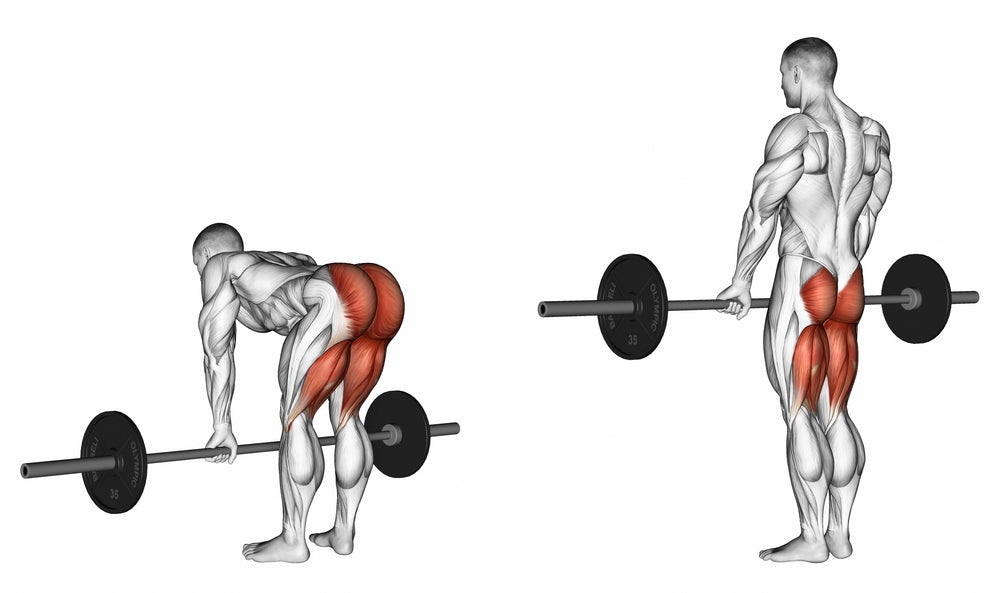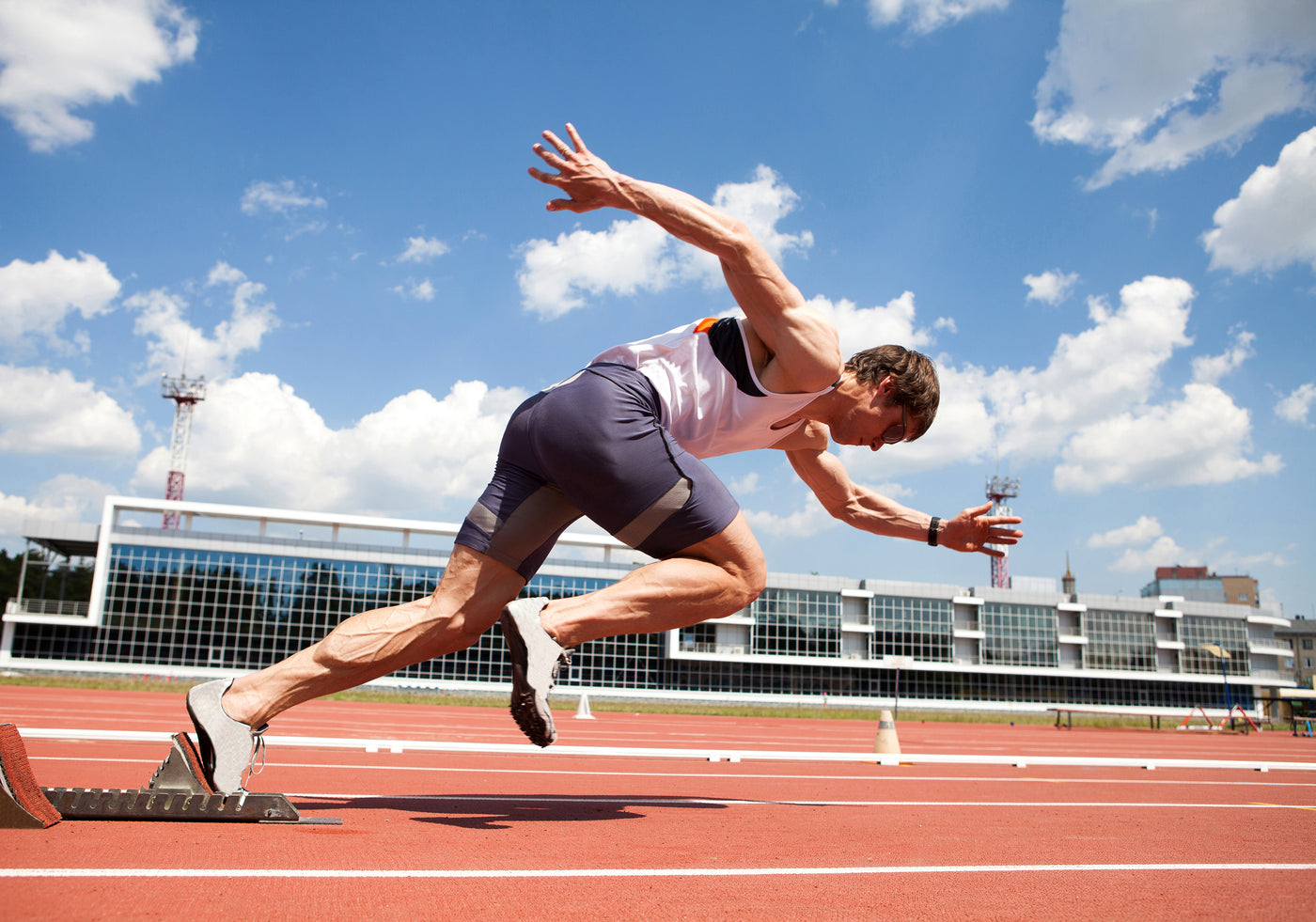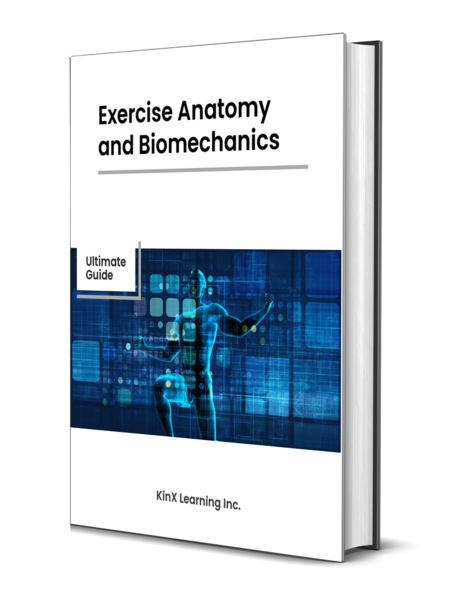Exercise Anatomy
Deadlift
The deadlift, a quintessential compound movement, holds unparalleled value in strength training. This exercise engages multiple muscle groups, targeting the posterior chain with unparalleled efficacy. Embrace the deadlift for a transformative journey, unlocking raw power and functional strength that transcends the gym, propelling you towards athletic prowess and a resilient physique.

Major Muscles and Actions Involved
The deadlift, a fundamental compound exercise, hinges on the joint action known as hip extension and knee extension. This dynamic movement engages the hip and knee joints simultaneously, requiring the powerful contraction of muscles to lift the weight from the ground.
In the realm of muscles, the deadlift recruits a vast array of muscle groups to execute the lift effectively. The primary muscles involved include the erector spinae, gluteus maximus, hamstrings, quadriceps, and adductor magnus. These muscles work in harmony to provide stability, generate force, and facilitate the controlled movement of lifting a heavy load from a static position. Additionally, the deadlift challenges the muscles of the core, including the rectus abdominis and obliques, as they play a crucial role in maintaining a stable torso throughout the lift. The trapezius and rhomboids are also activated to support the upper back, enhancing overall postural strength during the deadlift. This comprehensive engagement of muscle groups underscores the deadlift's efficacy in building full-body strength and functional power.

Sports Uses
In the realm of sports performance and athletic conditioning, the deadlift emerges as a powerhouse exercise, delivering direct benefits to athletes across diverse disciplines. This compound movement, known for its ability to target multiple muscle groups simultaneously, proves invaluable in enhancing strength, power, and overall athletic prowess.
For powerlifters, the deadlift stands as one of the triumvirate of competition lifts, alongside the squat and bench press. The sheer full-body engagement required in the deadlift translates directly to increased lifting capacity, making it a cornerstone for those seeking to dominate in powerlifting competitions.
Football players, particularly linemen and linebackers, leverage the deadlift to fortify their lower body and posterior chain strength. The explosive force generated during a deadlift mirrors the demands of sprinting, tackling, and explosive movements on the field, giving football athletes a competitive edge.
Track and field athletes, including sprinters and throwers, incorporate deadlifts to enhance their starting power and overall strength. The hip extension and posterior chain activation in the deadlift contribute significantly to the explosiveness required for sprinting out of the blocks or executing powerful throwing motions.
In the realm of combat sports such as wrestling and mixed martial arts, the deadlift proves its worth in building the foundational strength needed for takedowns, grappling, and overall physical resilience. The grip strength developed during deadlifts is particularly advantageous for athletes involved in grappling sports.
Basketball players benefit from the deadlift's capacity to enhance lower body strength and explosiveness, crucial for jumping, rebounding, and swift lateral movements on the court. The deadlift's ability to fortify the entire kinetic chain contributes to the agility and power required in basketball.
Even in the world of CrossFit, the deadlift is a staple exercise, as it aligns with the functional movements emphasized in the sport. CrossFit athletes, seeking a well-rounded fitness level, incorporate deadlifts to build strength, improve their metabolic conditioning, and prepare for the varied challenges presented in CrossFit competitions.
In essence, the deadlift transcends the boundaries of specific sports, offering a universal advantage to athletes pursuing enhanced strength and power. Its adaptability and effectiveness make it a cornerstone in training regimens across various disciplines, propelling athletes toward peak performance and competitive success.
Exercise Tips
- Technique:
Prioritize impeccable form in the deadlift to minimize injury risk and maximize effectiveness. Start with a hip-width stance, grip the bar just outside your knees, and keep your back straight throughout the movement. Initiate the lift by pushing through your heels, engaging your core, and lifting with a smooth, controlled motion. - Range of Motion:
Embrace a full range of motion by ensuring the barbell travels from the ground to a fully extended position, with your hips and knees locked out at the top. This complete range engages the target muscles comprehensively, fostering strength and stability throughout the posterior chain. - Amount of Weight Used:
Gradually increase the weight in your deadlifts as your strength progresses. Begin with a manageable weight to perfect your form, then incrementally add resistance. Striking a balance between challenging yourself and maintaining proper technique is crucial for sustained progress and injury prevention. - Variations:
Integrate variations of the deadlift into your training routine to target specific muscle groups and prevent plateaus. Explore sumo deadlifts, Romanian deadlifts, or trap bar deadlifts to add diversity to your workout regimen. These variations help address weaknesses, enhance muscle balance, and provide a fresh stimulus for continued gains. - Breathing:
Establish a consistent breathing pattern to optimize your deadlift performance. Inhale deeply before initiating the lift, filling your lungs with air to brace your core. Hold your breath through the initial pull and exhale forcefully at the top of the movement. This controlled breathing pattern stabilizes your core and enhances overall lifting efficiency.
Deadlift VS The good morning exercise
The deadlift and good morning exercises both target the posterior chain, emphasizing the lower back, hamstrings, and glutes. However, they differ in execution and primary focus. Deadlifts involve lifting a loaded barbell from the ground, engaging multiple muscle groups and promoting overall strength. On the other hand, good mornings isolate the lower back and hamstrings, with a focus on hip hinge movement while holding a barbell across the shoulders. While both exercises contribute to strength and muscle development, the deadlift is a compound movement with broader benefits, while the good morning provides a more targeted approach to specific muscle groups.

Want to Learn More?
Try our premium ebook, Exercise Anatomy and Biomechanics: Ultimate Guide.
Satisfaction guaranteed.
